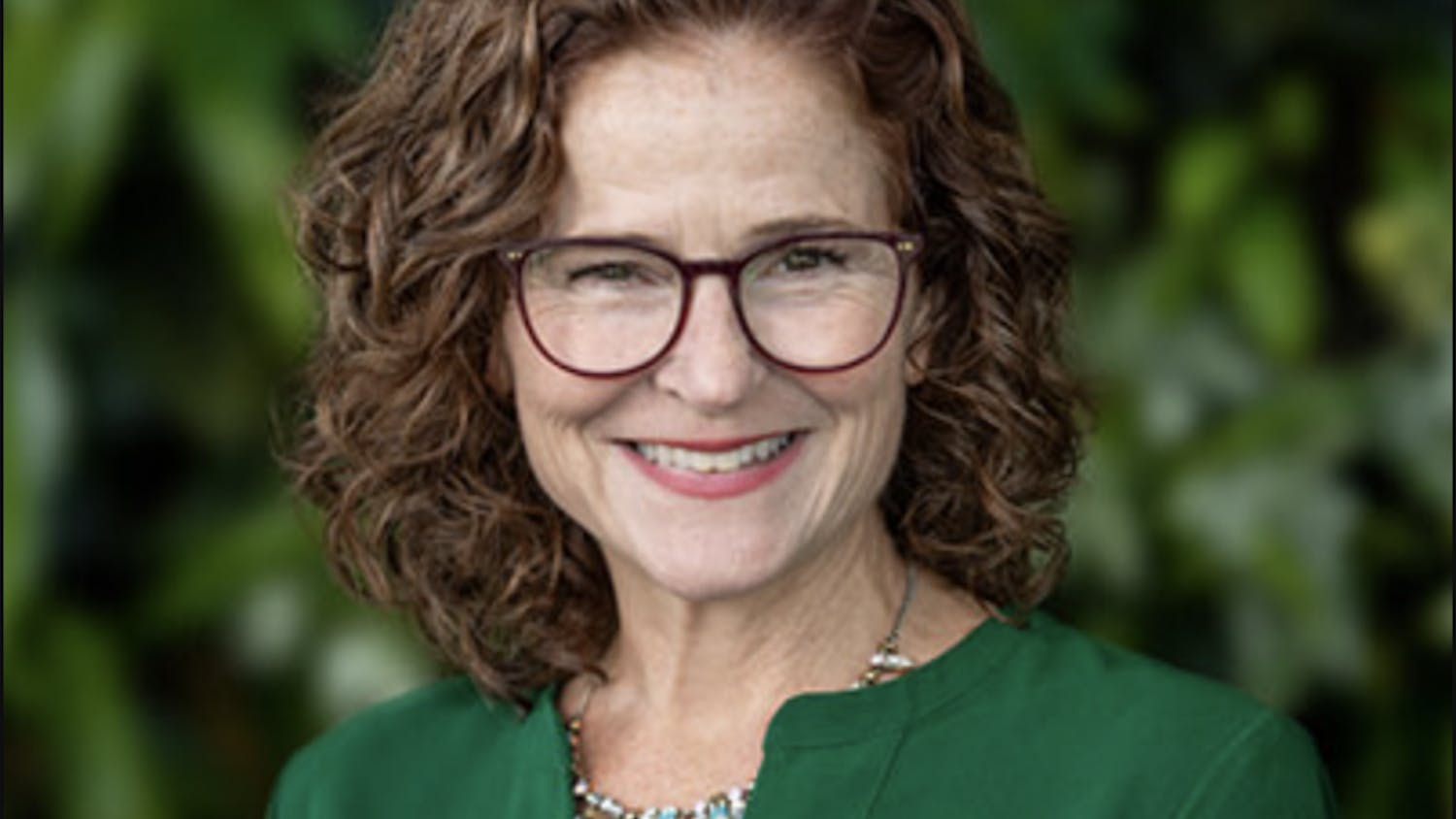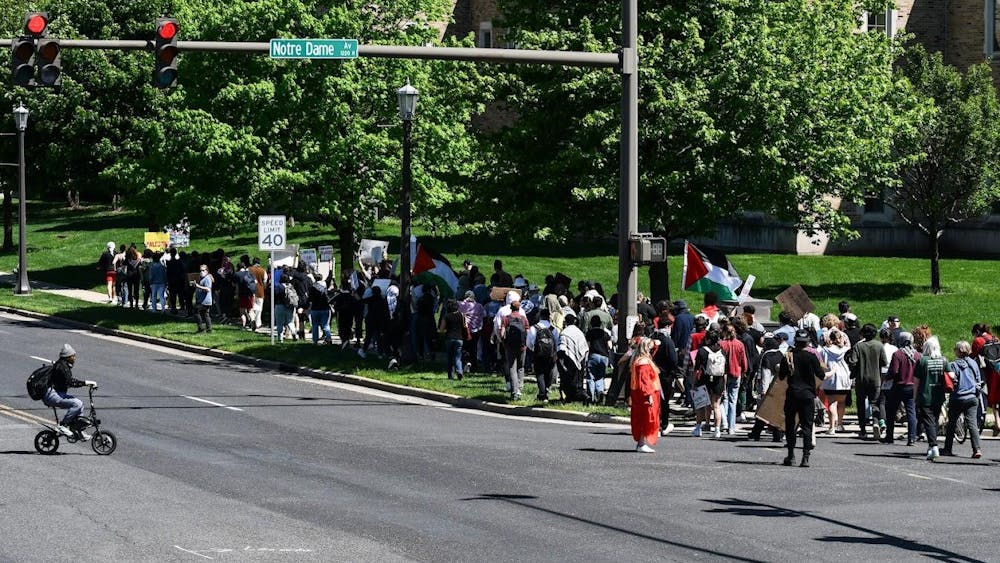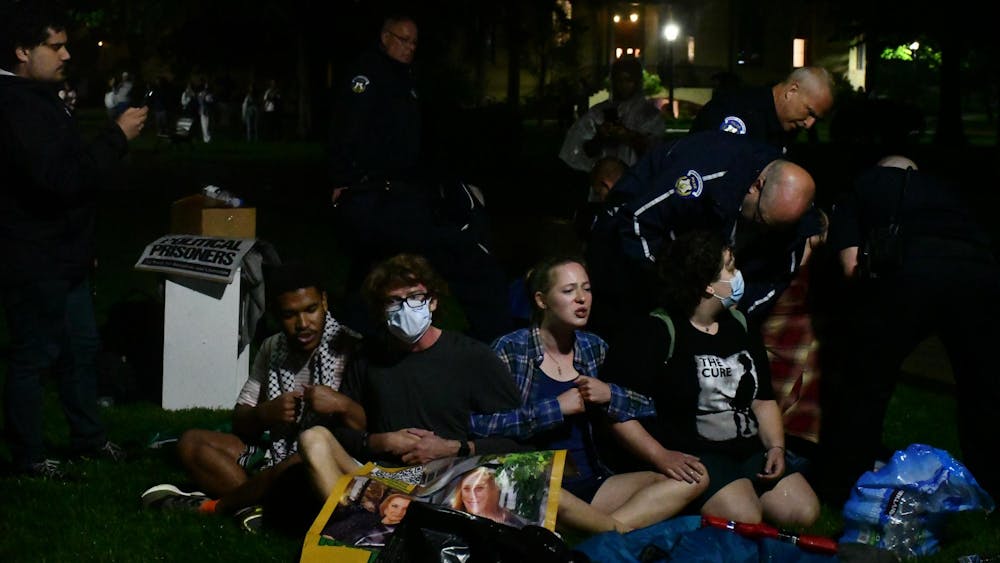A six-member panel convened Friday in the auditorium of the Hesburgh Center for International Studies for an event entitled “Confronting Whiteness at Notre Dame: Power, Identity and Exclusion.”
Hosted by the Mediation Program of the Kroc Institute for International Peace Studies, the panel was moderated by David Anderson Hooker, an associate professor of the practice of conflict transformation and peacebuilding, and included Christina Brooks, officer of diversity and inclusion for the City of South Bend; Emmanuel Cannady, a former Notre Dame administrator and third-year Ph.D. student in Sociology; Jefferson Ballew IV, a citizen of the Pokagon Band of the Potawatomi, the Native American tribe that originally inhabited the area; Iris Outlaw, director of multicultural student programs and services; Laurie Nathan, the director of the Mediation Program and professor of the practice of mediation.
In his introduction of the panel, Hooker said that “whiteness” is a distinct racial dynamic present throughout American institutions and culture.
“Whiteness is a description of both a political condition and a mechanism for the distribution of power,” Hooker said. “While it has clear relationship to racism, the two constructs don’t squarely overlap.”
Defining whiteness, Brooks said it revolves around the inherent privileges that white people enjoy without realizing it.
“Whiteness is simply the ability to be oblivious, of being demonstrably and blamelessly oblivious about responsibility of environment, the ways in which one creates, sustains or destroys it and the people moving in and out of it at any given moment,” Brooks said. “Contrarily, non-whiteness carries the necessity of being acutely, mindfully and intentionally aware of environment, the ways it is created, sustained or destroyed and the people moving in an out of it at any given moment.”
Drawing from his time as a student and former administrator at Notre Dame, Cannady said that white people often struggle to understand whiteness due to their complete immersion in it.
“For white folks, whiteness is essentially a fish trying to describe water,” Cannady said. “You can’t do it because you’re swimming in it all the time. It’s only when you’re outside the water that you know what’s going on.”
A distinction between whiteness and a more malevolent, sinister racism is required when speaking on the topic of whiteness, Hooker said.
“It’s really important to remind ourselves that the kind of whiteness we’re investigating and having a conversation about isn’t that repulsive, violent manifestation of whiteness, the kind of Richard Spencer [forms],” Hooker said. “But it’s because those forms are so easily denounced that we have the tendency to overlook the forms that actually are in operation and have a way of equally damaging the environment in which we exist.”
Ballew said that because his lineage is traced to the first inhabitants of the land where Notre Dame still stands, he is constantly reminded of the Notre Dame’s whiteness-based founding.
“This is my family land. This is my uncle’s property that we’re on right here, and so every day I am reminded of that golden dome, of the blood that was spilled here for my family,” Ballew said. “When this institution was created it was created on the backs and the blood of my family.”
Ballew said that Christian and Catholic thought on human nature is warped around the idea of original sin, and that it is the American mindset and system of virtue that is the truly sinful nature of humanity.
“Americans are a virus. Human beings are sacred,” he said. “We were placed here for a very special reason. It wasn’t until the onset of Christianity and Catholicism that we were told we are evil, that we were born in sin.”
But Notre Dame’s whiteness is not constricted to its founding, Brooks said. The way that Notre Dame advertises itself invites questions regarding the authenticity of its proclaimed mission to promote social justice and Catholic Social Teaching.
“Why are we still looking to a snapshot of history — the Hesburgh-King photo — from over 45 years ago to prove our historical commitment to social justice and racial justice,” Brooks said. “Is it not a source of shame that that is the last piece of evidence?”
Speaking directly to white people, Outlaw said they must work to give the marginalized opportunities to use their voice and extend the privileges they enjoy to all members of their community.
“It becomes one of those things where you have a seat at the table, whatever that table that is,” Outlaw said. “Are you opening and allowing other people to come and sit at the table … There’s nothing wrong with speaking on their behalf … but the fact is that a lot of times it’s good to hear from the people who are actually impacted and affected by that.”













